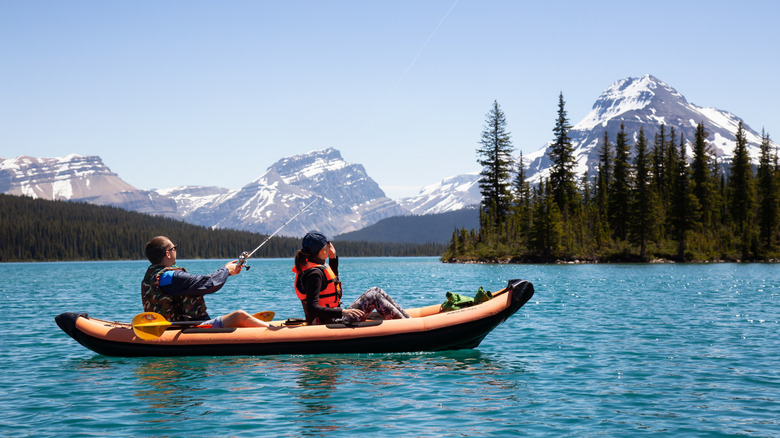Canada's Strict Water Activity Ban In National Parks Is One That Can't Be Ignored
There is no doubt about the popularity of fishing in Canada. The beloved water activity is enjoyed by millions of Canadians every year. Yet, with high numbers come high conservation stakes, and Canada's "Don't Let It Loose" campaign focuses efforts on protecting the delicate ecosystems of its national parks.
Parks Canada, the governmental organisation behind the country's 48 national parks, is focusing its efforts on preventing people from introducing harmful elements into bodies of water throughout the nation. In particular, the new regulations restrict the use of live bait to prevent invasive species from inadvertently adapting and spreading, and to curb the risk of pathogens affecting healthy fish in Canadian waters.
The program is a reminder of existing rules on baitfish, whether you are fishing in the jewel-toned Peyte Lake in Banff National Park (where a fishing permit is needed), in the Squamish River in Vancouver, or even in Campbell River, the "Salmon Capital of the World," where thrilling fishing adventures await. Despite regional variations, it's important to note that releasing live bait is always illegal, and so is disposing of dead fishbait in the water.
What steps can you take to comply with the new guidelines
There are several steps you can take to make sure you comply with current rules when you go fishing. The first port of call should always be checking the regional authority. For example, the state of Ontario has Fish ON-Line, a dedicated platform where you can check regulations on fishing updated to the day you are planning your expedition. Second to that, buying from regional suppliers who have access to regulated goods and are knowledgeable is a good way to pick livebait that carries fewer risks. An example of this hyper-localized approach is Ontario, where you are not allowed to move live bait between designated Bait Management Zones (BMZs). For example, if you catch bait in the magical Kawartha Lakes of Ottawa, you cannot use it in the Great Lakes, but only in the place where it was caught.
Despite all precautions, the only way to ensure you are not spreading foreign species or harmful pathogens in Canadian waters is by using artificial bait. Unlike live bait, artificial bait doesn't carry any diseases, making it environmentally safer. Live bait carries risks during and after fishing, and unused bait must be disposed of at least 98 feet (30 meters) away from the body of water or at home in the trash can. Alternatively, artificial lures can be reused until worn out. Should you drop an artificial lure in the water accidentally while on your expedition, it won't have ecological consequences.
Especially if you travel often, making sure you add artificial lure to your on-the-go fishing gear for when you go on vacation can save you from landing in hot waters with different regional, or even local, regulations.

